See examples of how hot triggers in YouTube videos gave one YouTube star more control over what his users watched and helped a charity fundraise $10,000 in one day.
Archive for the ‘Resources’ Category
Video: How can links in YouTube change behavior?
Wednesday, November 17th, 2010Video: Why is Twitter Persuasive?
Wednesday, November 17th, 2010How did Twitter ever become so popular? This video answers this through the lens of the Fogg Behavior Model used by the Persuasive Technology Lab at Stanford.
Video: Purple Path
Wednesday, November 17th, 2010This video introduces the new Purple Path Behavior Guide from the Persuasive Technology Lab at Stanford University, the first in the Behavior Wizard Guides series. Learn how to use persuasive techniques for behavior change to increase how much you exercise, read, sleep, or pretty much anything.
Behavior Grid
Wednesday, November 17th, 2010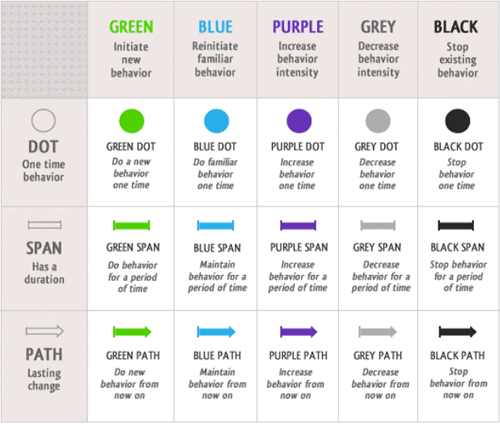
Not all behaviors are created alike.
There are 15 distinct behavior types as outlined on the Behavior Grid.
If you are a designer of health interventions, it’s important to know exactly what type of behavior you are designing for. Techniques may differ depending on the type of behavior “flavor”. The slideshare below explains the various behavior types and examples for each.
Examples of each Behavior Type
A Guide to the Behavior Grid
We find that people sometimes need a little help navigating the grid at first. If you want help determining your target behavior type, use the Behavior Wizard to guide you through the process. In addition, the lab has produced Behavior Guides for each of the behavior types, accessible after completing the Behavior Wizard.
Behavior Wizard
Wednesday, November 17th, 2010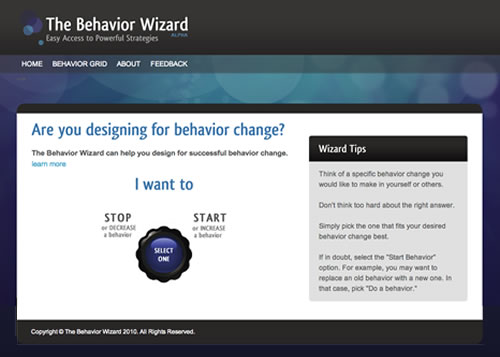
Are you designing for behavior change? The Behavior Wizard can help you design for successful behavior change. The Behavior Wizard is a method for matching target behaviors with solutions for achieving those behaviors.
Learn more on the Behavior Wizard project page or visit www.behaviorwizard.org
Behavior Model
Wednesday, November 17th, 2010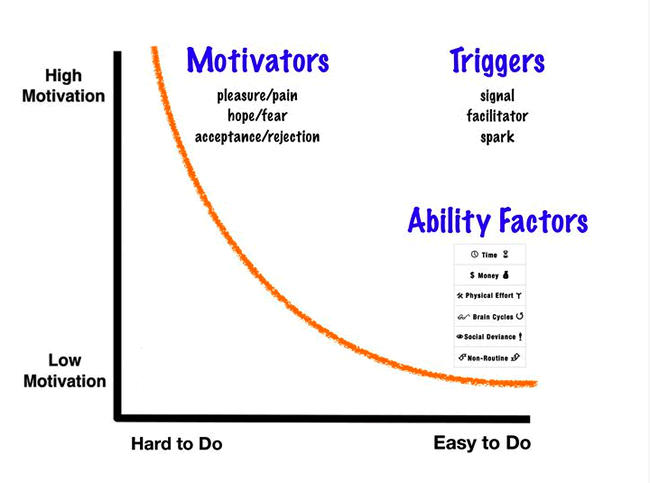
What Causes Behavior Change? My Behavior Model shows that three elements must converge at the same moment for a behavior to occur: Motivation, Ability, and Trigger. When a behavior does not occur, at least one of those three elements is missing. Learn more at www.behaviormodel.org
Behavior Model Paper
This paper presents a new model for understanding human behavior. In this model (FBM), behavior is a product of three factors: motivation, ability, and triggers, each of which has subcomponents. The FBM is useful in analysis and design of persuasive technologies.
Download the paper, A Behavior Model for Persuasive Design. (PDF)
Resources: Texting4Health Conference
Saturday, October 30th, 2010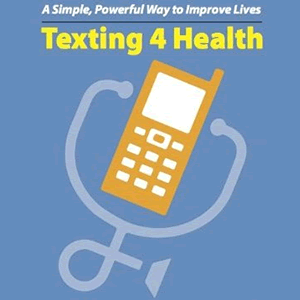
A list of resources and projects was generated for the Texting 4 Health conference held at Stanford University and can be found on the Texting4Health website.
Slides: Mobile Health 2010 Conference
Saturday, October 30th, 2010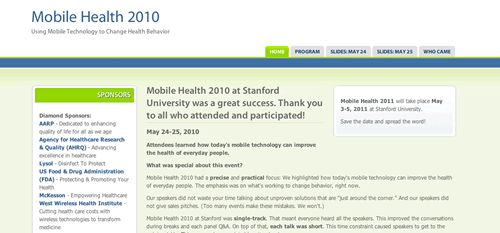
Presenter Slides from Mobile Health 2010
These are presenter slides from the Mobile Health 2010 conference at Stanford. Co-hosted by the Persuasive Tech Lab, the CDC, and AIDS.gov, the conference highlighted how today’s mobile technology can improve the health of everyday people. The emphasis was on what’s working to change behavior, right now.
Book: Texting 4 Health
Saturday, October 30th, 2010Text Messaging for Healthy Behavior Promotion
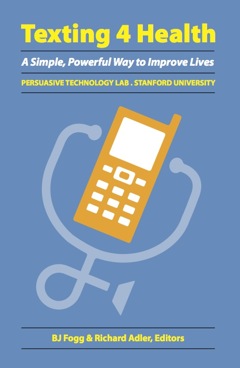
This book shows how text messaging on mobile phones can promote health. The 15 chapters are easy to read, written by experts involved in “Texting 4 Health” at Stanford University.
From this book you’ll learn about successful texting programs and practical guidelines to create interventions for better health. [Include published on date and other details?]
Take Action:
- Learn more at the Texting4Health website.
- Purchase the book on Amazon.